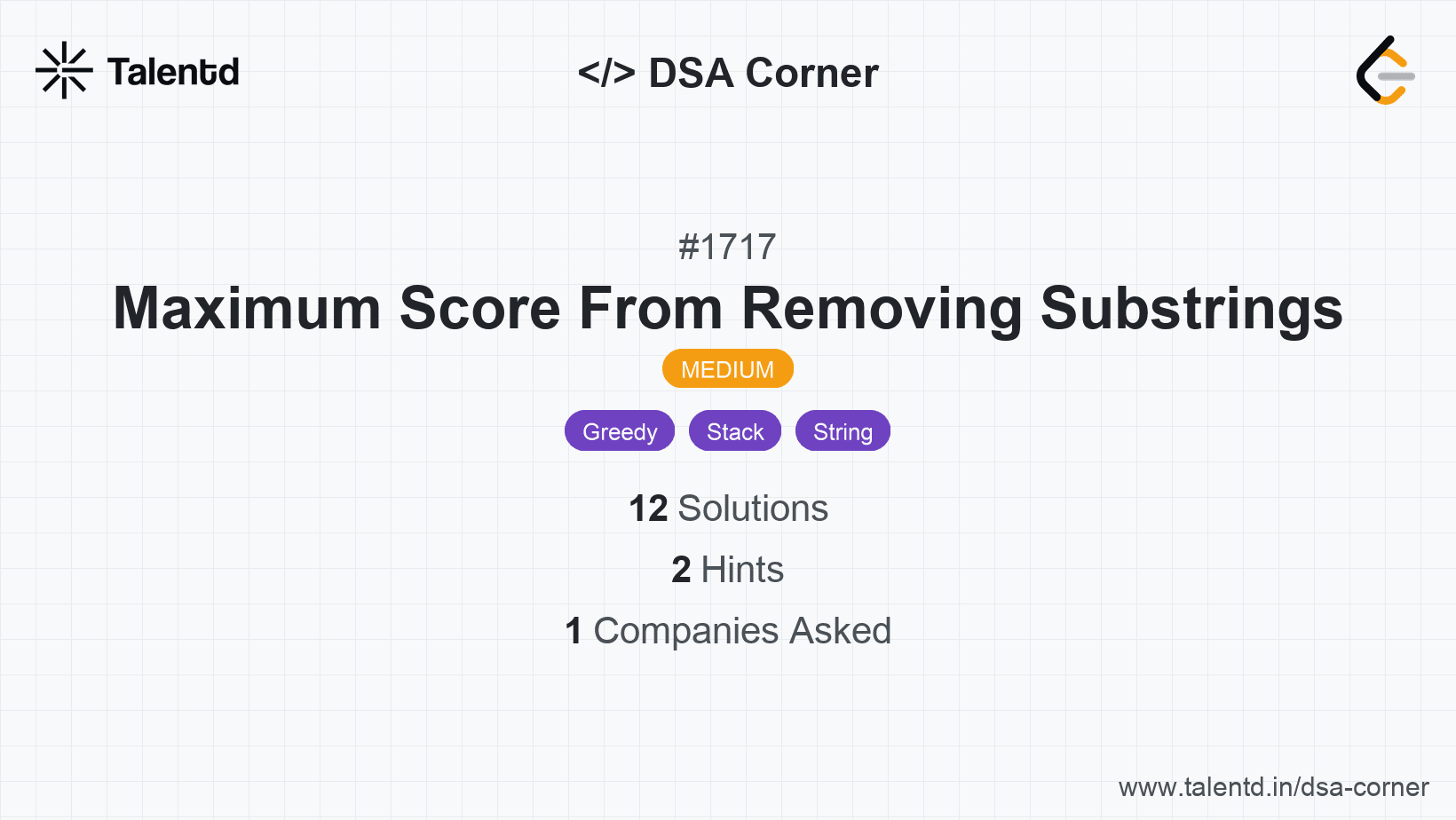
Sponsored
Sponsored
In this approach, we prioritize removing the substring with a higher score first. We utilize a stack to efficiently traverse and remove substrings from the string. Given two substrings 'ab' and 'ba', and their scores x and y, we decide which to remove first based on the higher score. The stack helps in processing the string in a single pass, adding character by character and checking for the target substring ending each time.
Time Complexity: O(n), where n is the length of the string.
Space Complexity: O(n), for the stack used in substring removal.
1def max_score(s, x, y):
2 score = 0
3 stack = []
4 first, second = ('a', 'b') if x > y else ('b', 'a')
5 first_points, second_points = (x, y) if x > y else (y, x)
6
7 # Remove the higher score patterns first
8 for char in s:
9 if stack and stack[-1] == first and char == second:
10 stack.pop()
11 score += first_points
12 else:
13 stack.append(char)
14
15 # Second pass to remove remaining patterns
16 second_pass = []
17 while stack:
18 char = stack.pop()
19 if second_pass and second_pass[-1] == second and char == first:
20 second_pass.pop()
21 score += second_points
22 else:
23 second_pass.append(char)
24
25 return score
26
27s = "cdbcbbaaabab"
28x = 4
29y = 5
30print(max_score(s, x, y))The Python solution uses a list to simulate a stack, performing two sweeps across the input string to prioritize maximum scoring substring removal. It is efficient and concise, taking advantage of Python's list behaviors.
The Two-Pointer approach leverages two pointers to parse through the string and eliminate substrings optimally. By managing two scanning points, determining which pattern to remove can be executed with minimal operations, optimizing score calculation effectively.
Time Complexity: O(n), where n is the length of the string.
Space Complexity: O(n), due to stack arrays used to manage character tracking.
1
This C solution uses two pointers combined with a simulated stack to efficiently parse and optimize substring removal by maximizing the scores at each step through linear traversal.